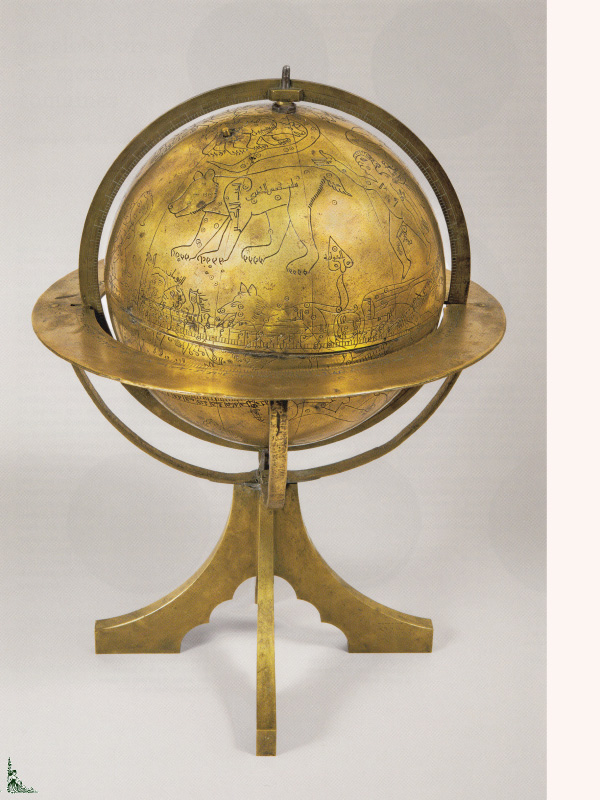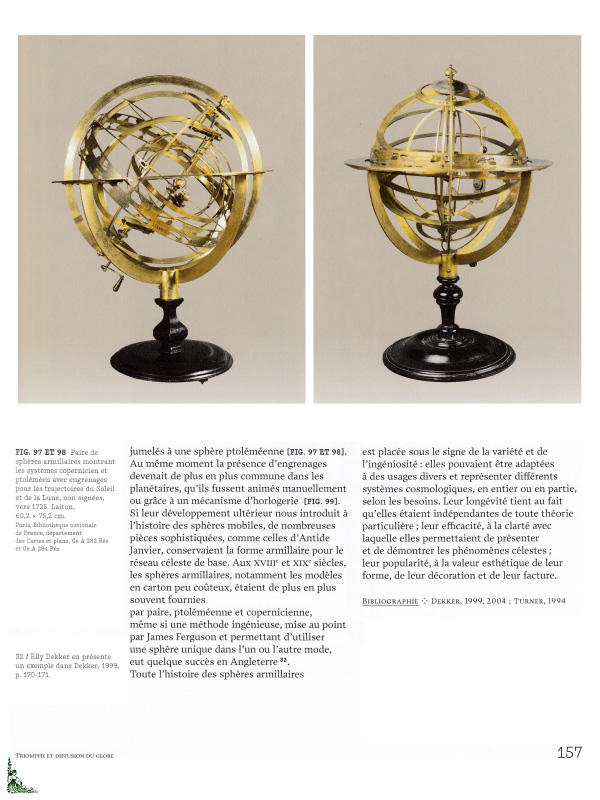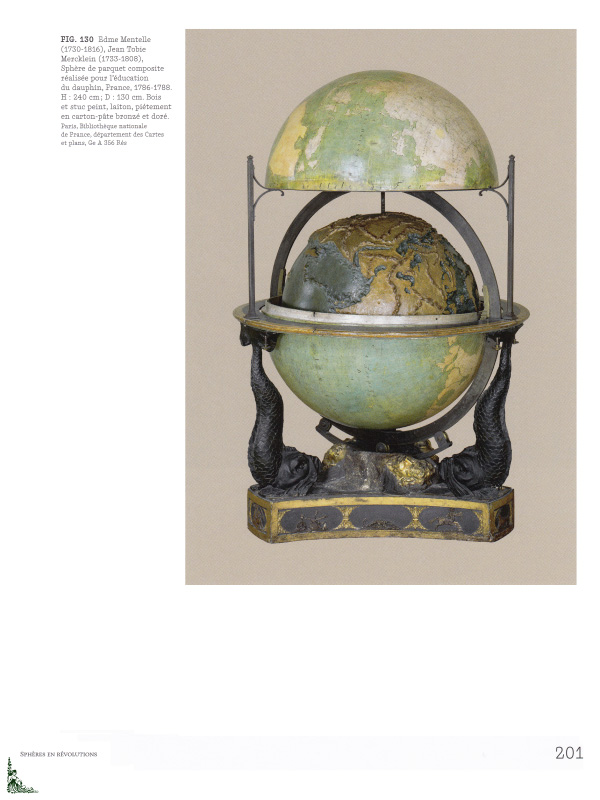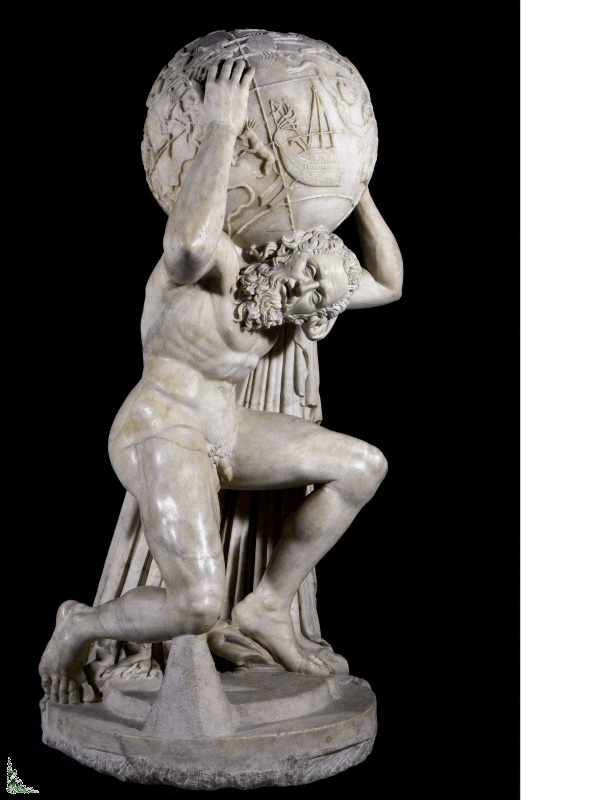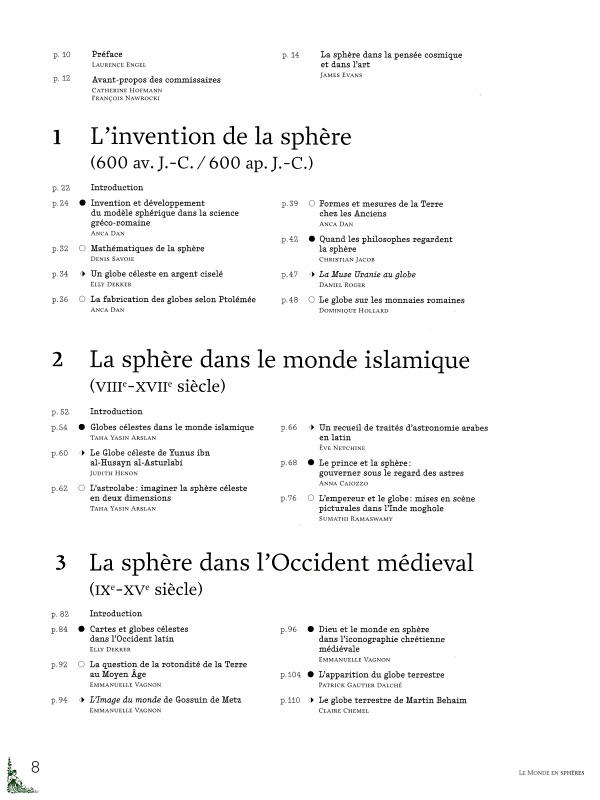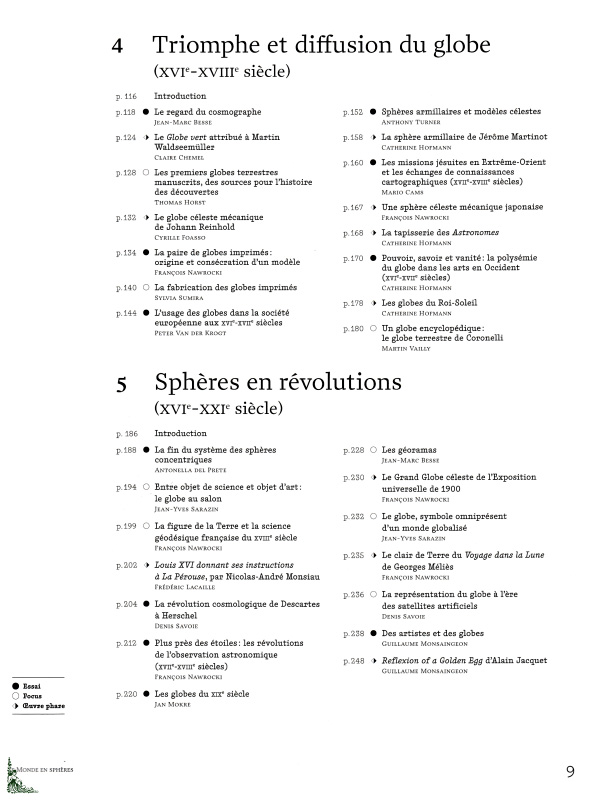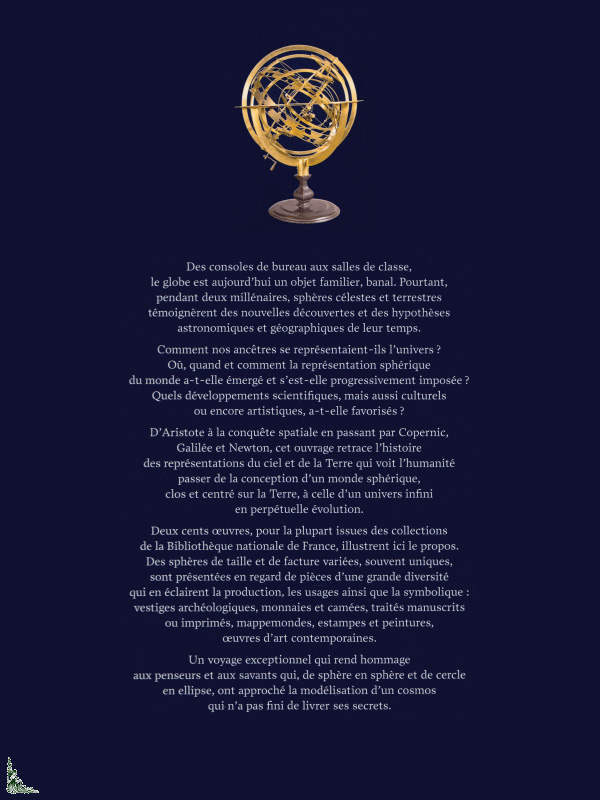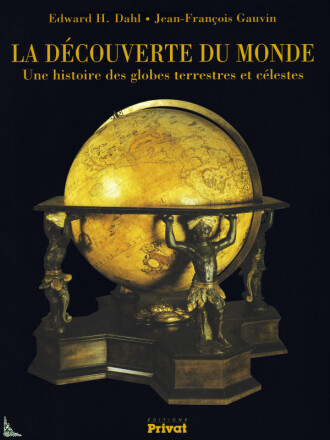Le monde en sphères
Détails de l'ouvrage
| Auteurs : | Catherine Hofmann & François Nawrocki |
| Éditeur : | BnF (2019) |
| Reliure : | Relié (272 pages couleurs) 24 cm x 29 cm |
| Langue : | Français |
| ISBN : | 978-2-7177-2798-2 |
| EAN : | 9782717727982 |
Description
Le monde en sphères, de C. Hofmann et F. Nawrocki, Ed. BnF, 24 cm x 29 cm, relié avec 272 pages couleurs
Ce livre de 272 pages couleurs retrace l'histoire des globes terrestres et célestes depuis leur origine.
Des consoles de bureau aux salles de classe, le globe est aujourd'hui un objet familier, banal. Pourtant, pendant deux millénaires, sphères célestes et terrestres témoignent des nouvelles découvertes et des hypothèses astronomiques et géographiques de leur temps.
Comment nos ancêtres se représentaient-ils l'univers ?
Où, quand et comment la représentation sphérique du monde a-t-elle émergé et s'est-elle progressivement imposée ?
Quels développements scientifiques, mais aussi culturels ou encore artistiques, a-t-elle favorisés ?
D'Aristote à la conquête spatiale en passant par Copernic, Galilée et Newton, cet ouvrage retrace l'histoire des représentations du ciel et de la terre qui voit l'humanité passer de la conception d'un monde sphérique, clos et centré sur la terre, à celui d'un univers infini en perpétuelle évolution.
Deux cents oeuvres, pour la plupart issues des collections de la Bibliothèque nationale de France, pour la plupart jusqu'à maintenant jamais présentées, illustrent ici le propos.
Des sphères de taille et de facture variées, souvent uniques, sont présentées en regard de pièces d'une grande diversité qui en éclairent la production, les usages ainsi que la symbolique : vestiges archéologiques, monnaies et camées, traités manuscrits ou imprimés, mappemondes, estampes et peintures, oeuvres d'art contemporaines. Un voyage exceptionnel qui rend hommage aux penseurs at aux savants qui de sphère et de cercle en ellipse, ont approché la modélisation d'un cosmos qui n'a pas fini de livrer des secrets.
Le modèle sphérique naît dans l'Antiquité gréco-latine, il ne procède pas, en effet, d'une expérience concrète universellement partagée, mais d'une construction intellectuelle basée tant sur des faits d'observations que sur des considérations philosophiques. L'époque médiévale réinterprète ce modèle sphérique, dans deux aires de civilisation distinctes, néanmoins connectées : Le monde Arabo-musulman et l'Occident chrétien, marqués tous deux par le primat de l'astronomie sur la géographie. Puis, le globe terrestre s'affirme comme modèle réduit de la Terre à la faveur des explorations européennes et de la Renaissance des arts et sciences en Europe aux XVe et XVIe siècles. Le triomphe du modèle sphérique en Europe s'incarne sous la forme de la paire de globes - terrestre et céleste - produite en série grâce à la gravure et largement diffusée dans la société. Avec la révolution copernicienne c'est la place de la Terre au sein de l'univers qui est remise en cause. Il s'agit ici de montrer les bouleversements des sciences et de l'astronomie aux siècles de Descartes et des Lumières. Cette histoire s'achève ainsi sur la transformation du modèle sphérique traditionnel aux XVIIIe et XIXe siècles, et de l'appropriation universelle de la représentation de la Terre au cours du XXe siècle.
Principaux chapitres de l'ouvrage :
- Préface de Laurence Engel
- Avant-propos des commissaires Catherine Hofmann et François Nawrocki
- La sphère dans la pensée cosmique et dans l'art, de James Evans
- L'invention de la sphère (- 600 av. J.-C. / 600 ap. J.-C.)
- La sphère dans le monde islamique (VIIIe-XVIIe siècle)
- La sphère dans l'Occident médiéval (IXe-XVe siècle)
- Triomphe et diffusion du globe (XVIe-XVIIIe siècle)
- Sphères en révolutions (XVIe-XXIe siècle)
Les textes en Français sont de Catherine Hofmann et François Nawrocki.
 English description
English description
The world in spheres
Details of the book
| Author: | Catherine Hofmann & François Nawrocki |
| Publisher: | BnF (2019) |
| Binding: | Hardcover (272 full color pages) 9-½ inches x 11-½ inches ( 24 cm x 29 cm ) |
| Language(s): | French |
| ISBN : | 978-2-7177-2798-2 |
| EAN : | 9782717727982 |
Editorial Reviews
The world in spheres, by C. Hofmann and F. Nawrocki, Ed. BnF, 9 inches x 11-½ inches ( 24 cm x 29 cm ), hardcover book with 272 full color pages
This hardcover book with 272 full color pages traces the history of terrestrial and celestial globes since their origin.
From desk consoles to classrooms, the globe is now a familiar, banal object. Yet for two millennia, celestial and terrestrial spheres testify new discoveries and astronomical and geographical hypotheses of their time.
How did our ancestors represent the universe?
Where, when and how did the spherical representation of the world emerge and gradually become self-evident?
What scientific developments, but also cultural or artistic, has it favored?
From Aristotle to the conquest of space via Copernicus, Galileo and Newton, this book traces the history of the representations of the sky and the earth that sees humanity move from the conception of a spherical world, closed and centered on the earth, to that of an infinite universe in perpetual evolution.
Two hundred works, most of them from the collections of the National Library of France, most of which have never been presented before, illustrate the point.
Spheres of different sizes and shapes, often unique, are presented with a wide variety of pieces that shed light on their production, uses and symbolism.: archaeological remains, coins and cameos, handwritten or printed manuscripts, maps, prints and paintings, contemporary works of art. An exceptional trip that pays homage to the thinkers and to the scientists who of sphere and circle in ellipse, have approached the modeling of a cosmos that has not finished delivering secrets.
The spherical model is born in Greco-Latin Antiquity, it does not proceed, in fact, a concrete experience universally shared, but an intellectual construction based both on facts of observations that on philosophical considerations. The medieval period reinterprets this spherical model, in two distinct areas of civilization, nevertheless connected: The Arab-Muslim world and the Christian West, both marked by the primacy of astronomy over geography. Then, the terrestrial globe asserts itself as a reduced model of the Earth thanks to the European explorations and the Renaissance of arts and sciences in Europe in the 15th and 16th centuries. The triumph of the spherical model in Europe is embodied in the form of the pair of globes - terrestrial and celestial - produced in series through engraving and widely disseminated in society. With the Copernican revolution it is the place of the Earth within the universe that is questioned. This is to show the upheavals of science and astronomy in the centuries of Descartes and Enlightenment. This story ends with the transformation of the traditional spherical model in the 18th and 19th centuries, and the universal appropriation of the representation of the Earth during the 20th century.
Contents:
- Preface by Laurence Engel
- Foreword by Commissioners Catherine Hofmann and François Nawrocki
- The sphere in cosmic thought and art, by James Evans
- The invention of the sphere (- 600 B.C. / 600 A.D.)
- The sphere in the Islamic world (8th - 12th century)
- The sphere in the medieval West (9th - 15th century)
- Triumph and spread of the globe (16th - 18th century)
- Spheres in revolutions (16th - 21st century)
The French texts are written by Catherine Hofmann and François Nawrocki.



